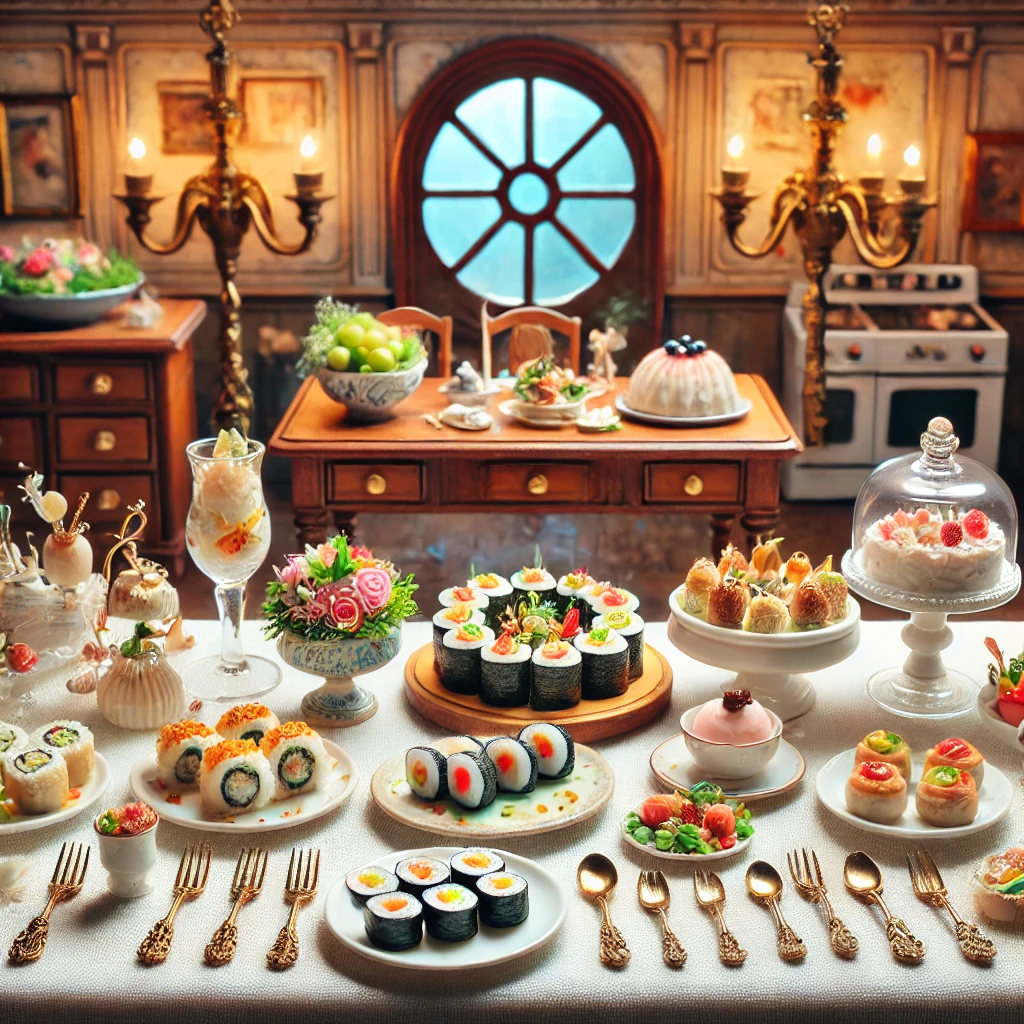Introduction to Tiniest Food And Fork
The enchanting world of miniature food, paired with its equally tiny forks, presents a unique intersection of gastronomy and artistry that captivates and delights. This niche culinary trend goes beyond mere novelty; it engages the senses, challenges conventional cooking techniques, and offers a whimsical yet sophisticated dining experience that is as visually appealing as it is tasteful.
History and Origin: Tracing the Diminutive Dishes
Miniature food’s allure is not entirely modern. Historical records trace its origins to the royal banquets of Europe, where tiny replicas of main courses were served as amuse-bouche to amuse and intrigue guests. However, the contemporary twist on these minuscule meals, often served with appropriately scaled-down silverware like forks, has seen a resurgence in popularity, fueled by social media and a growing appetite for innovative dining concepts.
The Tiniest Food: A Gourmet World in Miniature
At the heart of Tiniest Food And Fork is the commitment to replicating traditional dishes on a much smaller scale, often no larger than a dime. This requires precision and a deep understanding of ingredients and their behavior at reduced sizes. From tiny tacos to scaled-down soufflés, these small servings pack the same flavor punch as their larger counterparts, offering a full sensory experience in a single bite.
Examples of the Smallest Food Items Ever Created
- Microscopic Maki: Sushi chefs have perfected tiny sushi rolls that maintain the aesthetic and balance of flavors, all in a roll that fits on a coin.
- Doll-Sized Dim Sum: These bite-sized delights are crafted with the same attention to detail as traditional dim sum, yet they are small enough to be enjoyed in a single mouthful.
- Teeny Tiny Tiramisu: A dessert classic reimagined in a cube so small it could be mistaken for a candy, yet layered with all the traditional coffee and mascarpone flavors.
Interesting Facts and Anecdotes: The Lore of the Little
The creation of miniature food often involves tools not typically found in the kitchen, such as tweezers and miniature syringes, to achieve its precise and delicate presentation. Interestingly, some chefs use magnifying glasses to ensure every detail is perfect, emphasizing the blend of culinary skill and craftsmanship required in miniaturization.
Key Fork Role: The Tiny Tools of Taste
The tiny fork is not merely functional; it is central to the experience of miniature food. These forks are often custom-made to match the diminutive dishes, ensuring that the act of eating reflects the scaled-down elegance of the meal. It is a testament to the meticulous nature of miniature gastronomy, where even the utensils are part of the culinary art.
Miniature Food Presents Unique Challenges
Achieving intense flavors in such small quantities is a notable challenge. Chefs must carefully balance spices and seasonings to ensure that each miniature bite is as satisfying as a full-sized portion. Furthermore, the small size can lead to quicker cooling of hot dishes and faster melting of cold items, requiring precise timing in service.
Artistic Considerations in Miniature Culinary Creations
The artistic aspect of miniature food is evident in its presentation. Each dish is not only a feast for the palate but also for the eyes, often served on tiny plates with micro garnishes that highlight the chef’s attention to detail and aesthetic sensibility.
Techniques and Methods: Crafting the Minuscule Meals
Precision cooking techniques such as micro-steaming, tiny frying, and small-scale baking are essential. Chefs must adapt their methods to accommodate the reduced volume, focusing on uniform heat distribution and timing to preserve the integrity of the ingredients.
Tips and Tricks for Aspiring Miniature Food Chefs
- Use specialized miniature tools for precision.
- Focus on the quality of ingredients, as flavors are more concentrated in small bites.
- Experiment with natural colorants to enhance visual appeal without affecting taste.
Presentation and Display: Showcasing Miniature Marvels
The presentation of miniature food is crucial. Chefs employ various techniques to enhance the visual appeal, such as using contrasting colors, incorporating edible flowers, and setting up thematic backdrops that resonate with the diminutive dimensions of the food.
Creating Visually Appealing Displays
The display is often thematic, with elements that complement the miniature nature of the food, such as doll-sized dining sets or miniature kitchen scenes, which add an element of fantasy and storytelling to the dining experience.
Future Update of Miniature Food: Innovations on the Horizon
As technology advances, so too do the techniques for creating miniature food. Future trends may include the use of 3D printing to create precise molds for tiny foods or advancements in flavor concentration methods that could further enhance the sensory experience of these small-scale dishes.
Conclusion: The Giant Impact of Tiny Treats
The world of Tiniest Food And Fork is a testament to the creativity and innovation that the culinary arts can achieve. By blending meticulous craftsmanship, artistic presentation, and sophisticated flavors, these tiny treats continue to redefine the boundaries of traditional dining, proving that good things indeed come in small packages.


